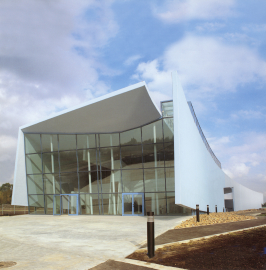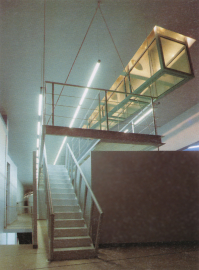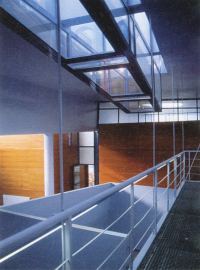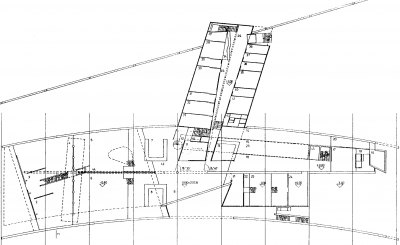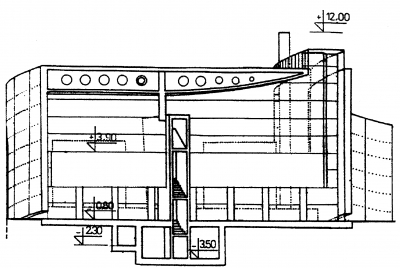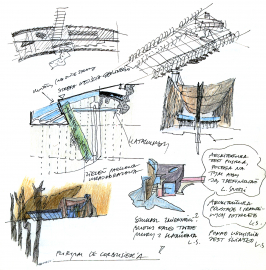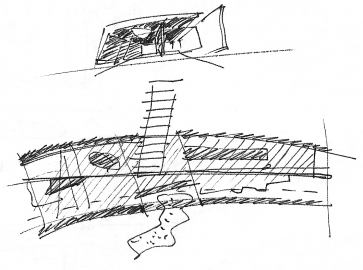Blue end of the road
The main idea of the project was to create a building which would be a timeless sign. A building which, standing at the end of the road as a gate, would symbolize the borderline between the world of the living and the infinity.
It would draw those present here into a world of transcendent experience, going beyond the limits of consciousness and perceptive cognition.
The issue of passage from light to shadow, the contrast between brightness and darkness is expressed in an architectural sequence whose language serves to articulate the ambience of the place and the space.
He existing conditions and the targeted development of the cemetery determined the geometrical organization of space, whose aesthetic quality was based on the rules forming its crucial element. The search for form was based on geometry as a basis of architectural articulation. Despite the rationalized and knowingly applied schematic form, it is manifested in the unexpected and surprising shape, at the same time being formally complete.
The spatial units of the ordering system, situated in a row, were cut through, rounded, shifted or rotated. The search for form was subordinated to the local landscape, in which the main facility the building intended for funeral services and ceremonies complements the whole composition. The liberation of the ascetic form of the space is reinforced by the material used the stone of our time, which is concrete.
The bright long approach to the open space marked by the rhythmic divisions of the stone pavement of the plaza makes its way into the interior, characterized by variable appearance of space. Defining it by the vibrating, adequately filtered light leads to the dematerialization of the walls. Bound together by the sculpturally-shaped ceiling, the walls form a GATE, a defined void, a continuum of space the physical realization of the adopted ideas.

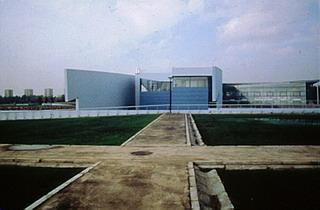
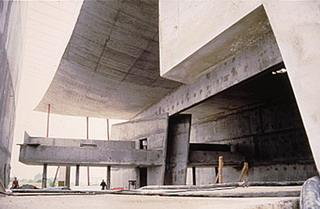
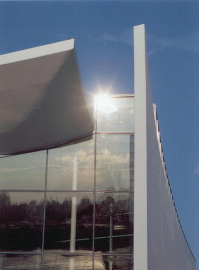
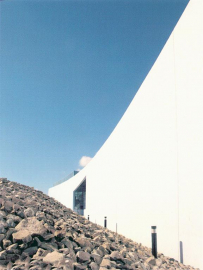
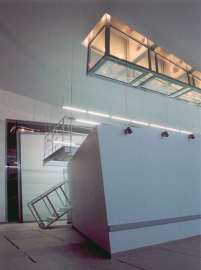
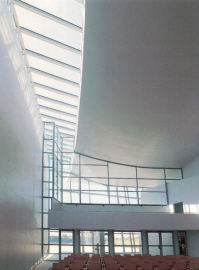
.jpg)

